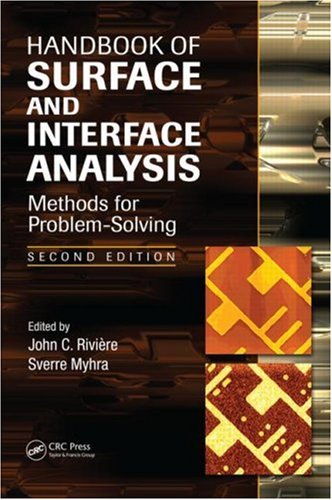

Most ebook files are in PDF format, so you can easily read them using various software such as Foxit Reader or directly on the Google Chrome browser.
Some ebook files are released by publishers in other formats such as .awz, .mobi, .epub, .fb2, etc. You may need to install specific software to read these formats on mobile/PC, such as Calibre.
Please read the tutorial at this link. https://ebooknice.com/page/post?id=faq
We offer FREE conversion to the popular formats you request; however, this may take some time. Therefore, right after payment, please email us, and we will try to provide the service as quickly as possible.
For some exceptional file formats or broken links (if any), please refrain from opening any disputes. Instead, email us first, and we will try to assist within a maximum of 6 hours.
EbookNice Team

Status:
Available4.4
35 reviewsThe original Handbook of Surface and Interface Analysis: Methods for Problem-Solving was based on the authors’ firm belief that characterization and analysis of surfaces should be conducted in the context of problem solving and not be based on the capabilities of any individual technique. Now, a decade later, trends in science and technology appear to have validated their assertions.
Major instrumental assets are generally funded and maintained as central facilities to help potential users make informed decisions about their appropriate use in solving analytical problem(s). Building on the popular first edition, this long-awaited second edition was motivated by the increasingly common industry view that it is more cost-effective to contract out analytical services than to maintain in-house facilities. Guided by that trend, this book focuses on developing strategic thinking for those who decide which facilities to access and where to subcontract analytical work. It covers most of the major tactical issues that are relevant at the location in which data are being produced.
New Information in this Second Edition Includes:
Assessing benefits and limitations of different methodologies, this volume provides the essential physical basis and common modes of operation for groups of techniques. Exploring methods for characterization and analysis of particular types of materials and/or their relevant applications—the text synergizes traditional and novel ideas to help readers develop a versatile and rational approach to surface and interface analysis.